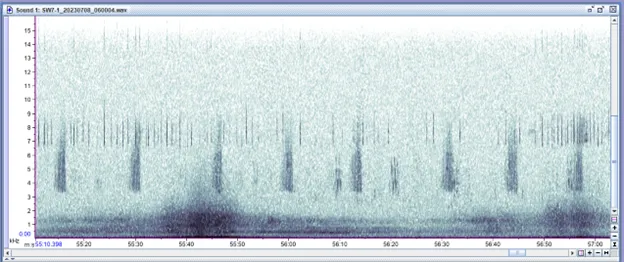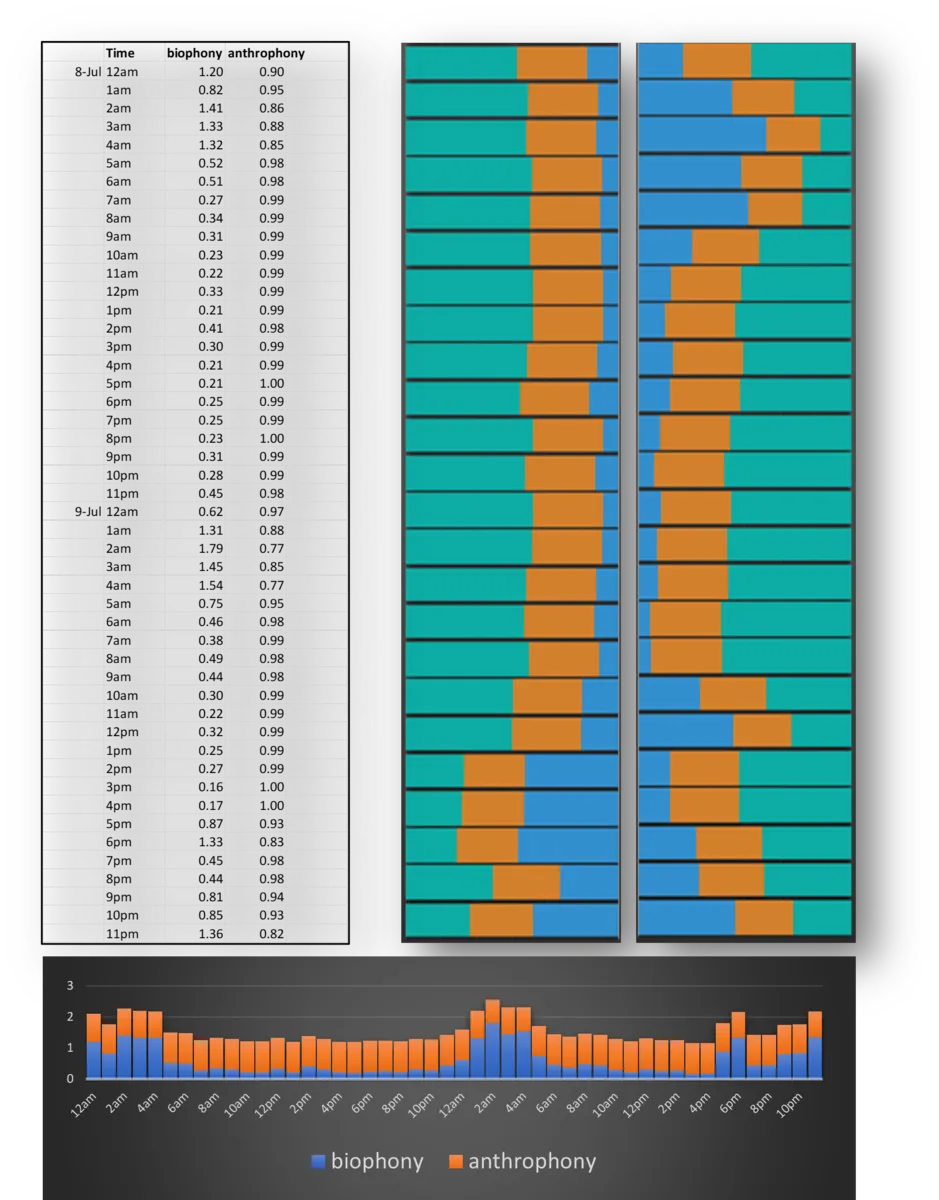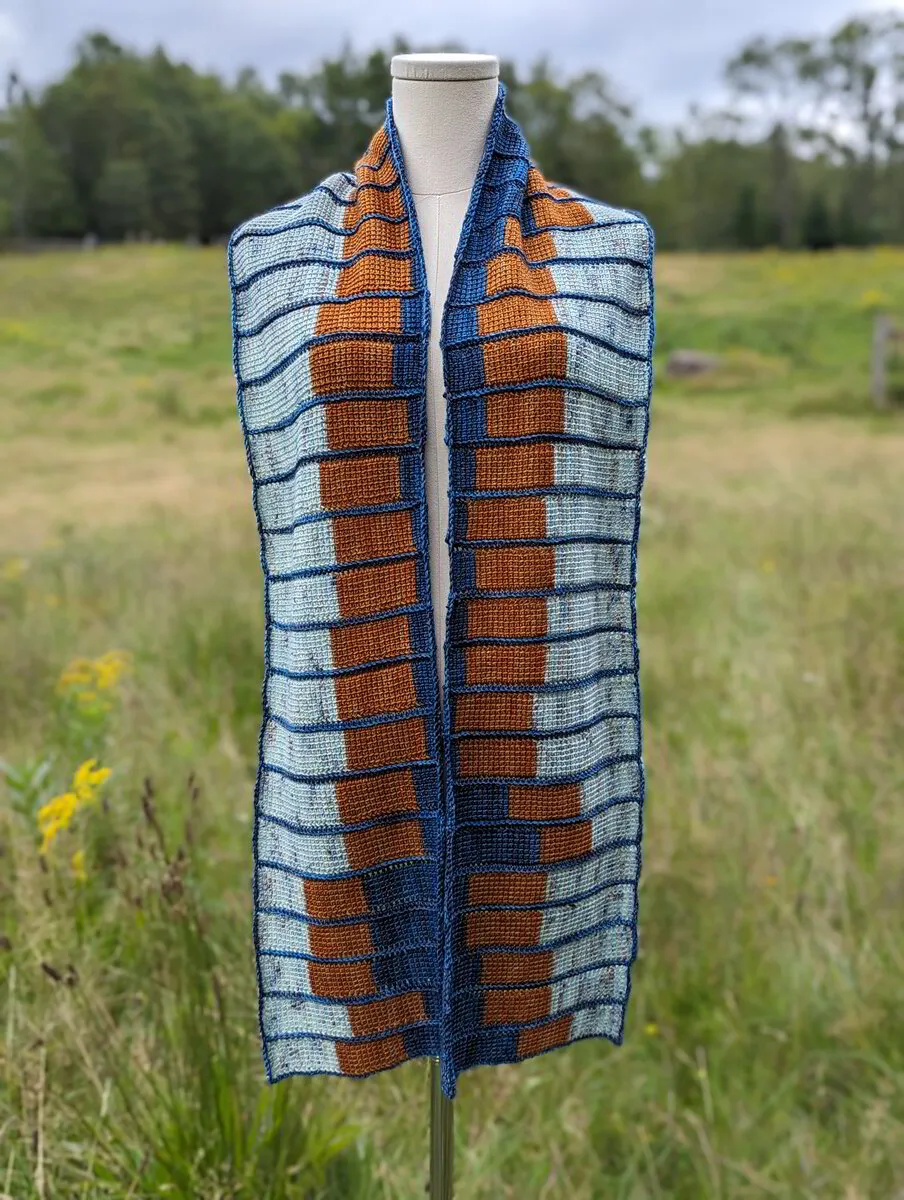Michale Glennon, Senior Research Scientist at the Paul Smith’s College Adirondack Watershed Institute.
I have been studying boreal birds in the Adirondacks for nearly two decades and the Osgood River Muskeg – a large peatland where you might find Lincoln’s sparrow, palm warbler, and Canada jay among others – is one of my longest-running and favorite transects. I’ve also, in the last few years, been coordinating Wool and Water, a collaborative data art project of the Paul Smith’s College Adirondack Watershed Institute in which we are using fiber art to tell stories about the issues affecting our waterways. The opportunity to participate in the Listening to Water Exhibition is an honor and there is no question for me which water I would choose to listen to if given the choice.
I use wildlife as a tool for understanding the health of our environment and threats to its inhabitants resulting from things like climate change, habitat loss, and human disturbance. Soundscape ecology is the study of the acoustic relationships between living organisms and their natural surroundings and examines the frequency distribution of environmental sounds to identify those arising from organisms (biophony), natural processes (geophony), and humans (anthrophony). This piece is a representation of sound in the vicinity of the Osgood near Paul Smiths.
I placed an autonomous recording unit next to the river and recorded 48 hours of continuous sound beginning at midnight on July 8th and used the resulting data to calculate the amount of natural and anthropogenic sound recorded during each hourlong period.
I then used Tunisian crochet to illustrate the soundscape data in a wearable item. Each section of the scarf represents an hour-long period, with the total sound represented as the height of the blue and golden sections together. Natural sounds – depicted in blue – were made primarily by birdsong and weather such as rain and wind, while anthropogenic sounds (gold) arose mainly from cars on nearby Route 30. Natural sounds were in highest proportions during late night and early morning hours, while the amount of man-made noise was almost constant throughout.
This piece fits right in with what we are striving to do with Wool and Water, which is to use fiber art to inspire the protection of clean water and healthy watersheds, and I am thrilled to participate in the conversation about the rights of rivers and their watersheds. Portions of the Osgood – like the muskeg where my transect lies – support some of New York’s rarest birds. If you ask me what the river might be saying, I’d guess “the road is too noisy.”




